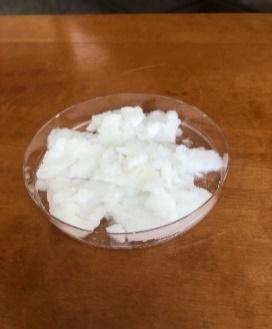| Technology code 21-AUA-03 |
Status OPEN |
Applications mode First call for expression of interest |
Access model As specified in the call |
 |
 |
 |
Code: 21-AUA-03
The Opportunity
The increasing use of bioplastics is driven by the continuous demand for sustainable products by consumers and brands alike, due to a growing awareness of the environmental impact and the need to reduce the fossil resources dependency. New and innovative biopolymers such as polyhydroxyalkanoates (PHAs) show increasing commercial interest. In this context, the use of food supply chain side streams for PHAs production constitutes a sustainable approach. Poly(3-hydroxybutyrate) (P3HB) is an environmentally friendly bio-based polymer, member of the polyhydroxyalkanoates (PHAs) family. The versatile biodegradability properties in most environments exceed those of any other bioplastic. PHB features thermoplastic properties, physical and mechanical characteristics similar to widely used fossil-based materials, such as polypropylene (PP). Due to its numerous advantages, PHB could be used in biomedical, agricultural and packaging applications. However, the high production cost of PHB is one of the major barriers impeding industrial production. Thus, food supply chain side streams should be used in order to reduce the PHB production costs.
Our Offer
The development of an environmentally friendly and sunstainable biorefinery process for the production of PHB and other value-added products via valorisation of food industry side streams has been employed. Emphasis is given on the utilization of side streams derived from fruit and vegetable juice production and flour milling industries (wheat bran) for PHB production for applications in food packaging. Therefore, in the context of the zero-waste circular economy, the simultaneous exploitation by fractionation of value added components (e.g. pectins, antioxidans) from the raw materials is performed.
The Technology
The free sugars from fruit and vegetable side streams were extracted and used as carbon source for PHB production. Phenolic compounds and pectin were extracted from the remaining solids by applying aqueous ethanol and citric acid based methods, respectively. Enzymatic hydrolysis of the remaining solids was performed and a carbon rich fermentation feedstock was produced. Considering the side stream of the flour milling industries, wheat bran was hydrolyzed into fermentation media using crude enzymes which were produced via solid state fermentation of Aspergillus awamori. Fed-batch fermentations with the bacterial strain Burkholderia sacchari were carried out using the aforementioned crude feedstocks (i.e. wheat bran hydrolysate, fruit hydrolysate and fruit sugars). A novel downstream separation and purification process for the recovery and purification of the intracellular PHB was developed based on enzymatic cell disruption considering the minimum degradation of biopolymer molecular weight. Crude enzymes produced via solid state fermentation were used in this stage.
Advantages & Innovations
- Exploitation of value-added products from fruit and vegetable waste and industrial side streams
- High yields and productivities in the biotechnological production of PHB
- High recovery yield in downstream separation and purification process
- PHB production with high molecular weight and appropriate physical and mechanical properties for packaging application were achieved
The overall evaluation of PHB demostrated the potential application in food packaging field as an alternative bio-based and biodegradable polymer for the substitution of fossil-based polymers.
Stage of Development
This novel biorefinery approach combining innovative technologies for valorisation of food industry side streams into sustainable production of PHB. The overall process has been validated in lab scale. The next step requires an industrial large-scale validation and production to ensure the effectiveness of the process in pilot or industrial scale.
Partner Search
FOOD INNOVATION RI is seeking for Partners from the Food Industry with the capacities to develop this technology. The Partner shall further develop this technology in a relevant and operational environment. Alternative options may also be considered.
Offered by
Department of Food Science and Human Nutrition, Agricultural University of Athens, Iera Odos 75, Athens, Greece
Contact

Prof Apostolis KOUTINAS
This email address is being protected from spambots. You need JavaScript enabled to view it.
Food Process Engineering


